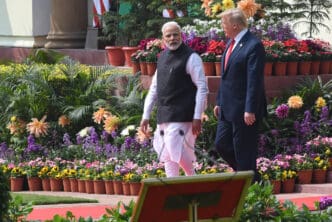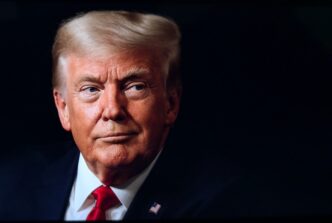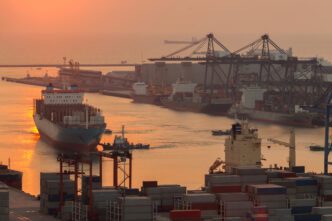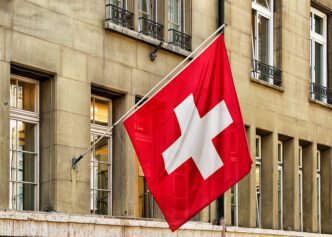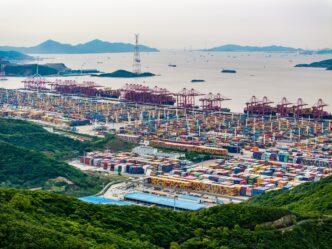WASHINGTON – President Donald Trump has dramatically escalated his trade pressure on India, threatening to impose not only a steep 25% tariff on all Indian imports but also an additional, unspecified “penalty” for the country’s continued reliance on Russian oil and military equipment. The twin threats, delivered in a series of sharp social media posts just days before a critical August 1 trade deadline, mark a significant setback in months of negotiations and place a key strategic partner in the crosshairs of the administration’s increasingly aggressive global trade policy.
The president’s move signals a new, more confrontational phase in the U.S.-India trade relationship, leveraging geopolitical tensions over the war in Ukraine to gain an advantage in economic negotiations. The escalation comes on the heels of a series of deals struck with other major trading partners, including the European Union and Japan, which appear to have emboldened the White House to demand more sweeping concessions from New Delhi. For India, a country that believed it was on the verge of securing a favorable trade deal, the president’s broadside is a stunning and unwelcome reversal.
The Dual Threat: Tariffs and Geopolitical Penalties
The president’s new line of attack was laid out in a pair of social media posts on Wednesday that directly linked trade imbalances with India’s strategic alignment with Russia.
“Remember, while India is our friend, we have, over the years, done relatively little business with them because their Tariffs are far too high, among the highest in the World, and they have the most strenuous and obnoxious non-monetary Trade Barriers of any Country,” Trump wrote.
He then pivoted from trade to geopolitics, adding, “Also, they have always bought a vast majority of their military equipment from Russia, and are Russia’s largest buyer of ENERGY, along with China, at a time when everyone wants Russia to STOP THE KILLING IN UKRAINE — ALL THINGS NOT GOOD!”
This explicit linking of trade policy to India’s relationship with Russia is a significant escalation. It moves beyond the administration’s stated goal of creating a “reciprocal” trade environment and into the realm of using tariffs as a tool to enforce its foreign policy objectives. The White House has not yet provided details on what the “penalty” would entail or how it would be implemented, but the threat alone introduces a new and highly volatile element into the already fraught negotiations.
A Hardening Stance in Washington
The administration’s tougher stance toward India appears to be fueled by its recent successes in trade talks with other key partners. The deals secured with the European Union and Japan, which set a rough baseline tariff of between 15% and 20%, have created a new benchmark that Washington now seems determined to impose on, or exceed with, other nations.
For months, top trade officials from Washington and New Delhi have been engaged in intense, shuttle diplomacy in pursuit of a final agreement. On several occasions, officials from both sides believed a deal was within reach. However, the recent agreements with other major economies have emboldened President Trump in the final days before the August 1 deadline, when the administration’s paused “reciprocal” tariffs are set to snap back into place.
According to one U.S. official familiar with the talks, the administration is no longer in a mood to accept partial deals. “They’re willing to go part of the way,” the official said of the Indian negotiators. “But the president isn’t in a ‘part of the way’ mood – he wants barriers removed completely or as close to completely as possible.”
This approach is tied to a strategy that has become increasingly apparent to foreign trade officials: President Trump has no qualms about letting the higher tariffs go into effect. He has delivered this message repeatedly in public, creating an environment in which he feels he has maximum leverage over trading partners who are desperate to maintain access to the world’s largest consumer market.
“I think President Trump is frustrated with the progress we’ve made with India but feels that a 25% tariff will address and remedy the situation in a way that’s good for the American people,” Director of the National Economic Council Kevin Hassett said at the White House on Wednesday. He added that the tariffs might cause Indian officials to “reconsider their practices” and could even spur Indian firms to onshore production in the United States.
The Russia Sanctions Nexus
Parallel to the direct trade negotiations, the administration has been escalating its threat to impose sweeping secondary sanctions on any country that continues to purchase Russian energy. This policy, designed to cripple Russia’s ability to fund its war in Ukraine, directly impacts India and China, the two largest buyers of Russian oil.
India’s oil imports from Russia have ticked up this year, with Russia now accounting for roughly 35% of India’s overall supplies. This economic lifeline to Moscow has become a major point of contention for Washington.
When the administration imposed a 50-day deadline on Russia to reach a ceasefire earlier this month (a deadline that has since shifted to August 8), it came with a clear warning that countries purchasing Russian oil would face severe consequences. Administration officials have been privately making it clear to their counterparts around the world that this is not a negotiating ploy and that the threat to escalate the sanctions regime on Russia should be taken with the utmost seriousness.
Treasury Secretary Scott Bessent said this week that he shared that message directly with his Chinese counterparts during trade talks in Stockholm. “I think anyone who buys sanctioned Russian oil should be ready for this,” Bessent told reporters.
By now explicitly tying a “penalty” for these purchases to the direct U.S.-India trade deal, President Trump is effectively merging the two pressure campaigns into one, placing New Delhi in an incredibly difficult position. India is now being forced to choose between its long-standing and economically vital energy and military relationship with Russia and its critical trade relationship with the United States.
A Setback for a Key Ally
The sudden escalation is a major blow to Indian Prime Minister Narendra Modi’s government, which had invested significant political capital in securing a trade deal. A stable and predictable trade relationship with the U.S. is seen as a cornerstone of India’s economic growth strategy and a key element of its geopolitical positioning as a counterweight to China in the Indo-Pacific.
The president’s harsh rhetoric and new demands have thrown the future of that relationship into question. As the August 1 deadline looms, Indian officials are now faced with a stark choice: either capitulate to a series of demands that go far beyond what was previously on the table, or brace for a punishing new wave of tariffs and penalties that could do significant damage to their economy. The high-stakes standoff is set to be a defining test of the U.S.-India partnership in the Trump era.

